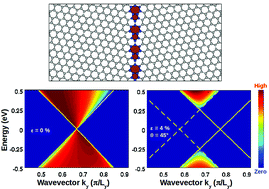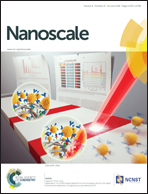Transport properties through graphene grain boundaries: strain effects versus lattice symmetry
Abstract
As most materials available at the macroscopic scale, graphene samples usually appear in a polycrystalline form and thus contain grain boundaries. In the present work, the effect of uniaxial strain on the electronic transport properties through graphene grain boundaries is investigated using atomistic simulations. A systematic picture of transport properties with respect to the strain and lattice symmetry of graphene domains on both sides of the boundary is provided. In particular, it is shown that strain engineering can be used to open a finite transport gap in all graphene systems where the two domains are arranged in different orientations. This gap value is found to depend on the strain magnitude, on the strain direction and on the lattice symmetry of graphene domains. By choosing appropriately the strain direction, a large transport gap of a few hundred meV can be achieved when applying a small strain of only a few percents. For a specific class of graphene grain boundary systems, strain engineering can also be used to reduce the scattering on defects and thus to significantly enhance the conductance. With a large strain-induced gap, these graphene heterostructures are proposed to be promising candidates for highly sensitive strain sensors, flexible electronic devices and p–n junctions with non-linear I–V characteristics.


 Please wait while we load your content...
Please wait while we load your content...